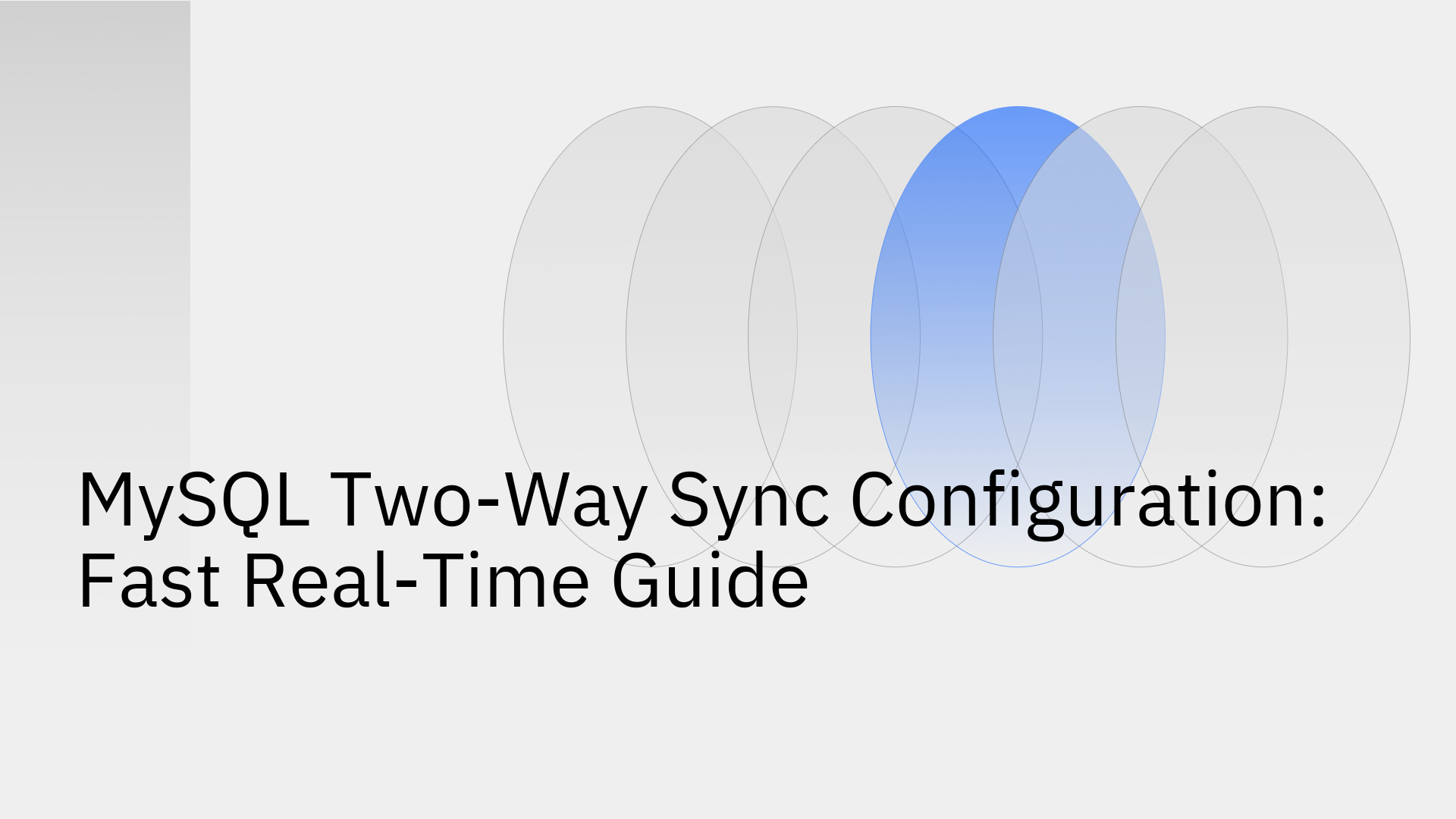
Setting up a MySQL two-way synchronization is essential for businesses that rely on consistent, real-time data across multiple applications.
This configuration ensures high availability, supports distributed systems, and guarantees your entire team works from a single source of truth. However, implementing a stable and reliable mysql two way sync configuration has historically been a complex, manual process fraught with risk.
This guide will cover the traditional methods and their inherent challenges. More importantly, it will introduce a faster, more dependable approach using a modern, no-code platform that eliminates the engineering headache and delivers immediate results.
MySQL two-way sync is also known as bidirectional or master-master replication. It’s a configuration where two database servers are set up to function as both a source (the "master") and a replica (the "slave") for each other. Any change made on one server whether it’s a new record or an update is automatically propagated to the other, keeping both databases perfectly synchronized.
This setup offers several powerful advantages [2]:
The primary challenge with this architecture is the high potential for data conflicts. For example, if both servers try to create a new record with the same primary key at the same time, it can cause errors that MySQL cannot resolve automatically, leading to data drift [2].
Manually creating a mysql two way sync configuration is a highly technical task that demands deep database expertise and meticulous planning. The process requires several critical configuration steps on both servers [6].
At a high level, the process involves:
my.cnf configuration file on each server.server-id to each database node to identify it within the replication topology [8].log_bin), which records every database change.While this may seem manageable, the real difficulties are hidden in the details:
auto_increment_increment and auto_increment_offset so one server only generates odd-numbered IDs (1, 3, 5) and the other only generates even-numbered IDs (2, 4, 6). This prevents direct collisions but adds significant complexity to database management [7].For organizations that demand the benefits of two-way sync without the engineering burden, Stacksync provides a modern, efficient, and reliable solution. Our platform is purpose-built to automate the complexities of data synchronization, allowing you to focus on your business goals, not on managing brittle data pipelines.
Stacksync transforms the manual process with powerful, automated features:
See how our platform simplifies Two-Way Sync for data-driven companies.
With Stacksync, implementing a robust mysql two way sync configuration is a simple, four-step process that you can complete in just a few minutes.
Step 1: Connect Your Apps First, securely connect your MySQL database and the other application you want to sync whether it's a CRM, ERP, or another database. Stacksync offers one-click connections and secure methods like SSH tunneling for private databases. Explore our MySQL two-way sync integration and workflow automation options to get started.
Step 2: Choose Tables and Fields Next, simply select the exact tables and fields you want to keep synchronized. Stacksync gives you granular control by supporting all standard and custom objects, so your data flows exactly where you need it.
Step 3: Map Fields Stacksync automatically maps the fields between your two systems, even if they have different names or data types. Our platform intelligently handles all data transformations, ensuring numbers, text, and dates are always formatted correctly without any manual intervention.
Step 4: Enable Two-Way Sync Finally, just flip a switch to enable bidirectional synchronization. Our platform handles the rest, instantly monitoring both systems for changes and ensuring they remain perfectly in sync. You can see just how easy it is in our two-way sync documentation.
In manual setups, data conflicts can quickly lead to a "split-brain" scenario, where your two databases drift apart and contain conflicting information. Fixing this requires a massive, time-consuming data cleanup effort [3]. A managed platform approach eliminates this risk.
To guarantee data integrity, Stacksync recommends starting with one of your data sources empty. This prevents duplicate records from being created during the initial synchronization. For ongoing updates, our platform has built-in conflict resolution logic that uses timestamps to ensure the most recent change is always saved, preventing accidental data overwrites. You can learn more by comparing data replication vs. bi-directional sync.
An effective real-time sync solution must be performant, scalable, and secure. Stacksync is engineered to handle millions of records from day one, automatically managing complexities like API rate limits and infrastructure scaling so your syncs run flawlessly as your data volume grows.
Security is at the core of our platform. Stacksync is SOC 2, GDPR, and HIPAA compliant. We provide secure connection options like SSH tunneling and SSL certificates to ensure your sensitive business data is protected at all times.
While it's possible to configure MySQL two-way sync manually, the process is complex, brittle, and demands significant ongoing maintenance. For modern organizations that depend on accurate, real-time data to operate, it's an inefficient and risky approach.
Stacksync provides the fast, reliable, and scalable solution designed for today's data stacks. We eliminate the engineering overhead by delivering a no-code platform with real-time speed, automated conflict handling, and enterprise-grade security. This empowers your team to drive business value, not waste time fixing broken data pipelines.
Ready to stop building and start syncing? Start syncing today.